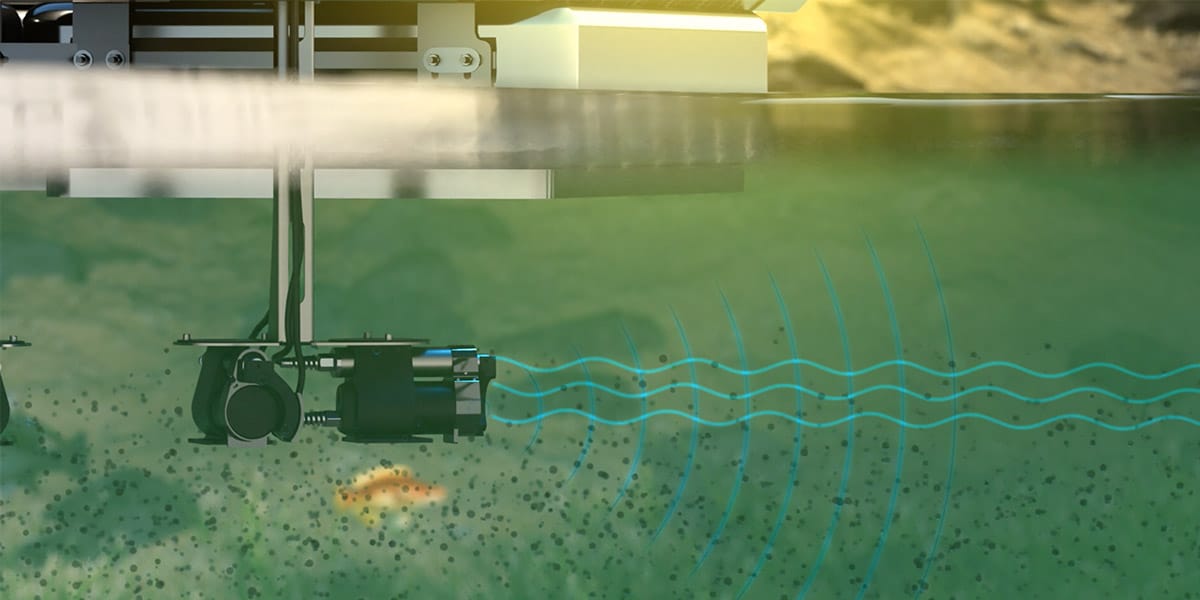In the battle against algae overgrowth in bodies of water, ultrasonic algae control has emerged as a highly effective and environmentally friendly solution. However, the success of this technology hinges on a fundamental factor: the choice of the right ultrasound frequencies. In this article, we will delve into why selecting the correct frequencies is crucial for treating algae and explore how interactive algae control, exemplified by LG Sonic’s innovative approach, leverages machine learning to optimize treatment regardless of algae’s adaptability.
The consequences of using the wrong frequencies

Ultrasound frequencies play a pivotal role in disrupting algae growth by generating pressure waves that affect the buoyancy and structure of algal cells. However, the impact of these frequencies is not universal. Selecting the wrong ultrasound frequencies can have adverse effects, potentially exacerbating algae concentrations and complicating their control. When ultrasound frequencies are misapplied, several undesirable consequences may arise:
Stimulated Growth: Algae are incredibly adaptive organisms. When exposed to inappropriate frequencies, they may respond by altering their growth patterns. Some frequencies can even stimulate algal reproduction, leading to a surge in population density.
Selective Resistance: Algae have the capacity to develop resistance to specific ultrasound frequencies over time. If a suboptimal frequency is consistently used, resistant strains of algae may proliferate, rendering the treatment less effective.
Inefficient Energy Usage: Using the wrong frequencies not only fails to control algae but also consumes unnecessary energy. This inefficiency results in higher operational costs and a larger carbon footprint.
Given these consequences, it is evident that the selection of ultrasound frequencies should be approached with precision and care.
Interactive algae control for optimal results
Recognizing the importance of frequency precision, LG Sonic has pioneered interactive algae control, a cutting-edge approach that utilizes machine learning and behavioral data to identify the most effective ultrasound frequencies for each unique algae-infested environment.
Behavioral Data Collection: LG Sonic’s interactive algae control systems continuously monitor the behavior of algae in the target water body. This data collection involves the tracking of algae movements, growth rates, and other relevant parameters.
Machine Learning Algorithms: Through the power of machine learning, LG Sonic’s systems process vast datasets to identify patterns and correlations in algae behavior. This includes analyzing how different frequencies affect algae movement and reproduction.
Frequency Optimization: With the insights gained from machine learning, LG Sonic’s systems can adapt ultrasound frequencies in real-time. This adaptive approach ensures that the treatment remains effective even as algae adapt to changing conditions.
Continuous Improvement: Interactive algae control is an iterative process. As new data is collected and analyzed, the system refines its frequency settings, consistently striving for the most efficient and environmentally friendly treatment.
By tailoring ultrasound frequencies based on behavioral data and machine learning insights, LG Sonic’s interactive algae control system minimizes the risk of promoting algae adaptability. This approach also optimizes treatment efficiency, ultimately leading to better and more sustainable results.
Conclusion
In the realm of ultrasonic algae control, the choice of frequencies can make or break the effectiveness of the treatment. Using the wrong frequencies not only fails to curb algae growth but can actually worsen the problem. Algae adaptability and resistance are real challenges that demand a precise and adaptive approach.
LG Sonic’s interactive algae control stands out as a groundbreaking solution that harnesses the power of data and machine learning to fine-tune ultrasound frequencies. By continuously analyzing and adjusting treatment parameters, LG Sonic ensures that algae control remains efficient and effective, regardless of the adaptability of the algae population.
In summary, when it comes to ultrasonic algae control, frequency matters. The right frequencies, as exemplified by LG Sonic’s interactive approach, are the key to success in combating algae overgrowth, preserving the health of aquatic ecosystems, and minimizing environmental impact.
